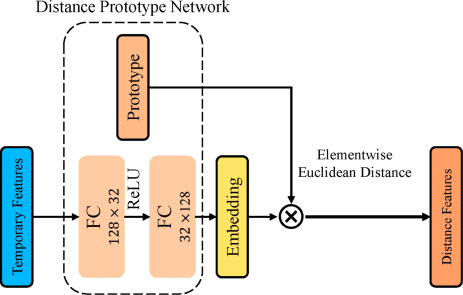
Multiple classifiers for time series classification using adaptive fusion of feature and distance based methods
Time series classification is a supervised learning problem used in many vital applications. Classification of data varying with time is considered an important and challenging pattern recognition task. The temporal aspect and lack of features in time series data makes the learning process different from traditional classification problems. In this paper we propose a multiple classifier system approach for time series classification. The proposed approach adaptively integrates extracted local and global features together with distance similarity based methods. A feature extraction process is
Natcracker: Nat combinations matter
In this paper, we report our experience in working with Network Address Translators (NATs). Traditionally, there were only 4 types of NATs. For each type, the (im)possibility of traversal is well-known. Recently, the NAT community has provided a deeper dissection of NAT behaviors resulting into at least 27 types and documented the (im)possibility of traversal for some types. There are, however, two fundamental issues that were not previously tackled by the community. First, given the more elaborate set of behaviors, it is incorrect to reason about traversing a single NAT, instead combinations

MyP2PWorld: Highly reproducible application-level emulation of P2P systems
In this paper, we describe an application-level emulator for P2P systems with a special focus on high reproducibil-ity. We achieve reproduciblity by taking control over the scheduling ofconcurrent events from the operating system. We accomplish that for inter-and intra-peer concurrency. The development ofthe system was driven by the need to enhance the testing process ofan already-developed industrial product. Therefore, we were constrained by the architecture ofthe overlying application. However, we managed to provide highly transparent emulation by wrapping standard/widely-used networking

Native Mobile Applications UI Code Conversion
With the widespread use of mobile applications in daily life, it has become crucial for software companies to develop the applications for the most popular platforms like Android and iOS. Using a native development is time consuming and costly. Cross-platform mobile development like Xamarin and React native emerged as a solution to the mentioned problem of native development for the time and cost. Meanwhile it requires the developers to learn a new language. Other tools are converting the mobile apps of specific platform to the corresponding platform, but most of them still lack the mobile

Strain-encoded CMR for the detection of inducible ischemia during intermediate stress
Objectives: This study sought to evaluate the diagnostic accuracy of strain-encoded cardiac magnetic resonance (SENC) for the detection of inducible ischemia during intermediate stress. Background: High-dose dobutamine stress cardiac magnetic resonance (DS-CMR) is a well-established modality for the noninvasive detection of coronary artery disease (CAD). However, the assessment of cine scans relies on the visual interpretation of wall motion, which is subjective, and modalities that can objectively and quantitatively assess the time course of myocardial strain response during stress are

Investigation of root causes of order unfulfillment: A Logistics case study
This study targets an order fulfillment problem in a freight forwarding company. Some applicable solutions are implemented such as supplier performance evaluation, suppliers' selection, and location analytics. The objective of the study is to reduce the number of unfulfilled orders by supply planning. Some of the tools used to achieve this are Excel (VBA and Pivot tables) to perform drivers' scoring, analytic hierarchy process (AHP), and ArcGIS software to visualize locations. The results showed that the company can implement the suggested solutions to reduce the number of order cancellations
Network-coded wireless powered cellular networks: Lifetime and throughput analysis
In this paper, we study a wireless powered cellular network (WPCN) supported with network coding capability. In particular, we consider a network consisting of k cellular users (CUs) served by a hybrid access point (HAP) that takes over energy transfer to the users on top of information transmission over both the uplink (UL) and downlink (DL). Each CU has k+1 states representing its communication behavior, and collectively are referred to as the user demand profile. Opportunistically, when the CUs have information to be exchanged through the HAP, it broadcasts this information in coded format

Managing technological innovation: Competitive advantage from change, third edition
Written by the author who helped crystalize the field of technology management and the management of innovation with the first two editions of Managing Technological Innovation, this Third Edition brings the subject in line with current business strategy. It also presents information in a newer organized format that aligns more closely with how the topics are presented and discussed in the classroom. Also included is a wider discussion of how science and technology interact with the global economy. © 2011 by John Wiley & Sons, Inc. All rights reserved.

Automotive standards compliance cost reduction by mutual integration between automotive SPICE and IATF 16949:2016
In the automotive sector, processes outcomes could be derived from different standards including Automotive SPICE PAM 3.1 and IATF 16949:2016. Both standards have common requirements, but each standard describes the requirements from its viewpoint. IATF 16949:2016 is mainly concerned with the quality management system processes from "organizational" perspective, while Automotive SPICE focuses on assessing the capability and maturity of the organization's core processes from the project perspective. In real life, organization working within the OEMs supply chain applies separately both models
Technology and financial innovation
This case study examines the global financial debacle of 2007-2008 to see the roles in which technology played in new financial schemes. It uses theory about social-technical systems and applications of technology to analyze the case. It identifies theoretical issues in which MOT can relate to classical economic theory. © 2011 World Scientific Publishing Company.
Pagination
- Previous page ‹‹
- Page 12
- Next page ››
